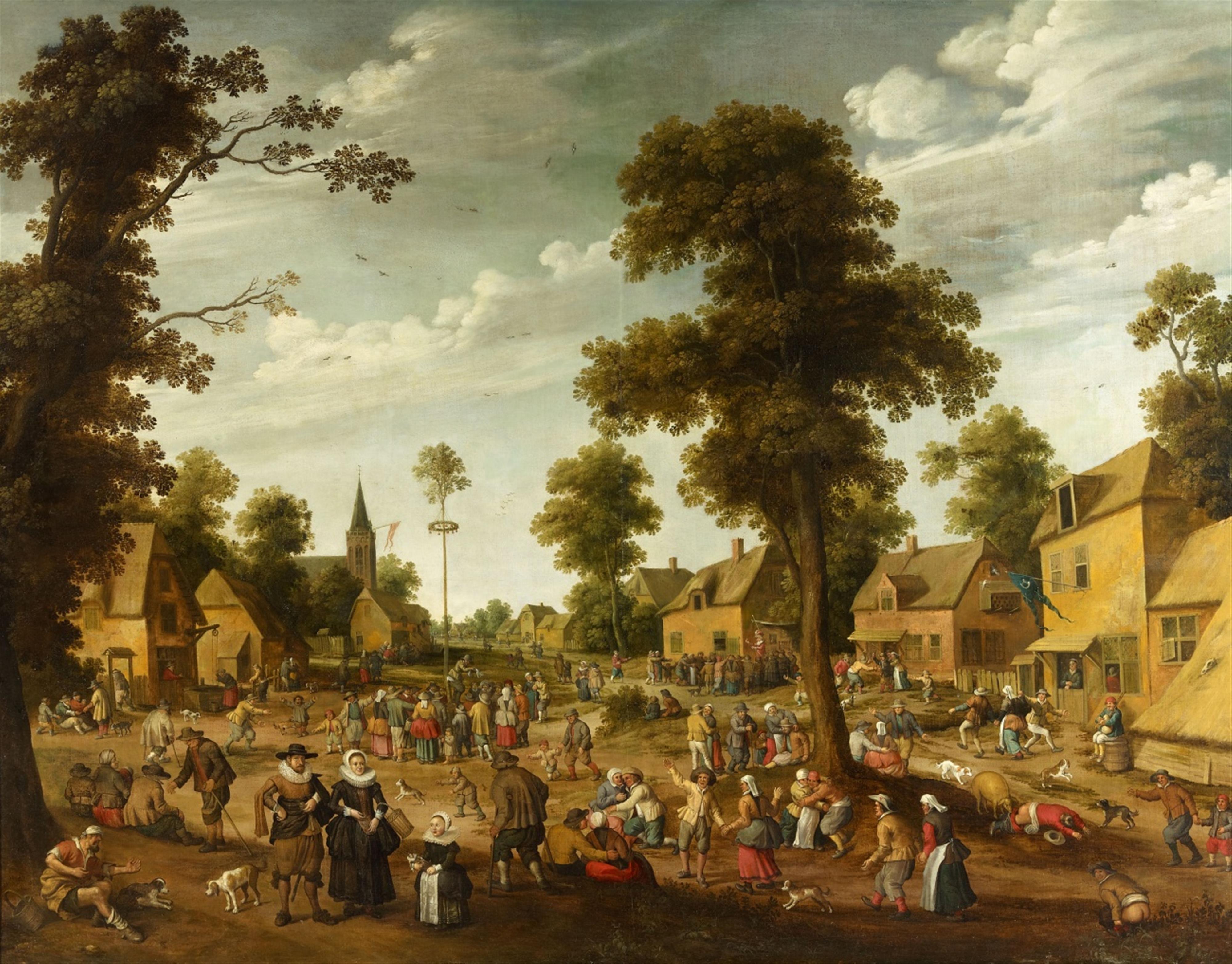Joost Cornelisz. Droochsloot
Peasant Festival in a Village Square
Oil on canvas (relined). 153 x 198.5 cm.
Signed and dated lower left: Drooch Sloot 1637.
Joost Cornelisz. Droochsloot is thought to have been born in Utrecht in 1586, although proof of the exact year of his birth has not yet been found. Droochsloot is first documented in 1616 when he became a member of the Guild of Saint Luke in Utrecht. He married Agnietgen van Rijevelt two years later and the couple had 13 children, of whom just one survived into adulthood: A son named Cornelis who also became a painter.
Much of Droochsloot's oeuvre consists of village and urban views, including some winter scenes. His compositions are frequently dominated by a broad, often diagonally winding, road leading into the background and flanked to one or both sides by houses, inns or city walls. Droochsloot held an almost sole monopoly on this genre in Utrecht, as at this time the city's other painters were under the spell of the Italian School, and especially of Caravaggio. The painter's love of genre-esque anecdotal elements, as illustrated here in the jumbling mass of lively figures, has its roots in the Flemish tradition established by painters such as Pieter Brueghel and David Vinckboons.
This village scene is among the largest works that the Utrecht master ever painted, and with around 130 figures and 14 dogs, almost certainly one of his most densely populated. It depicts a myriad of rustic figures dancing, drinking, and merry making. Among them we see performers, story-tellers, and couples exchanging furtive embraces, but also some who are apparently a little too deep in their cups, such as the unconscious man on the right who has attracted the unwanted attentions of a pig, or the man on the lower right margin engaged in an entirely different pursuit.
The elegantly dressed family group on the left half of the image appears to inhabit an entirely different sphere. Not only their valuable, fashionable clothing, but also the way in which they turn away from the rustic tumult that surrounds them, to address the viewer face on, lends the group the appearance of a portrait. One would not go too far in assuming them to depict the family who commissioned this unusually large and representative piece.

